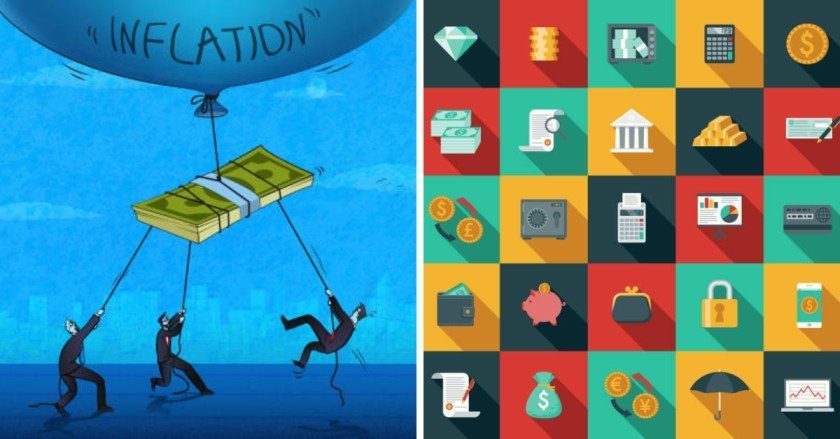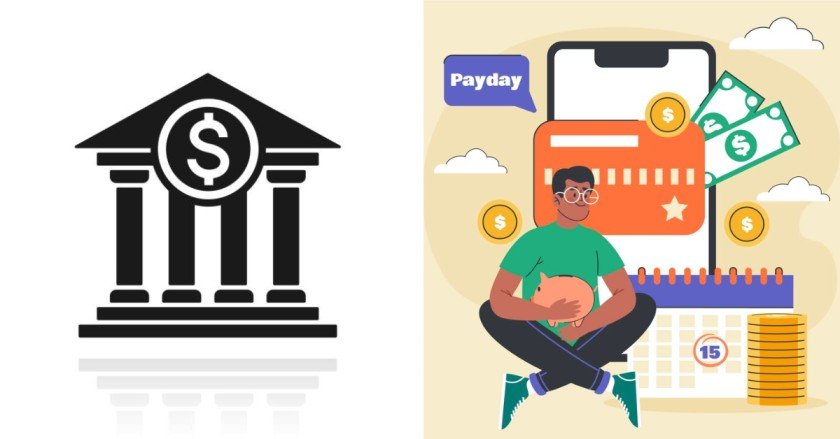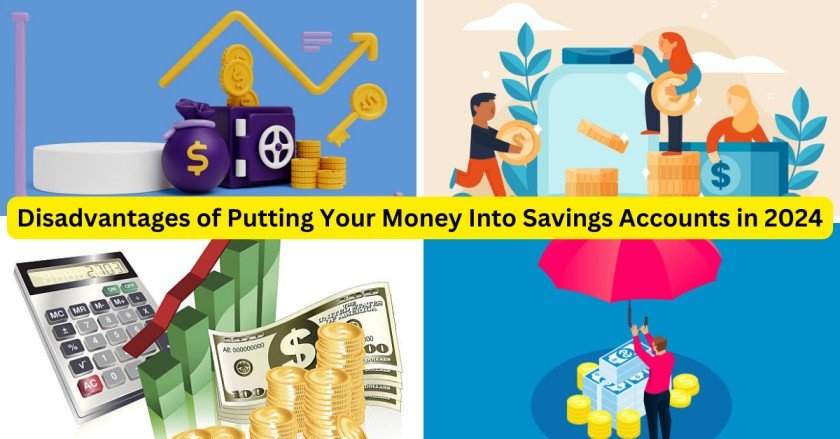Table of Contents
While savings accounts are widely regarded as a secure and trusted means of storing money, it is important to be aware of the potential pitfalls that they may entail. In this comprehensive and insightful article, we delve into the intricacies of two prominent disadvantages that savers face in the year 2024. Our aim is to provide individuals across the globe, particularly those in Tier 1 countries, with a thorough understanding of the profound impact these drawbacks can have on their financial well-being.
By examining the current financial landscape, we shed light on the nuanced challenges that savers encounter amidst evolving economic conditions. From exploring the effects of inflation on savings to analyzing the potential impact of interest rate fluctuations, we leave no stone unturned in our quest to equip readers with the knowledge necessary to make informed financial decisions.
Rest assured, all the information presented in this meticulously researched and comprehensive piece is reliable and up-to-date, accurately reflecting the latest financial trends shaping our world. We understand the importance of staying informed and ensuring that our readers have access to the most relevant and reliable information to safeguard their financial futures.
Whether you are an experienced saver or just beginning your financial journey, this article is designed to provide valuable insights and guidance. Join us as we navigate the complexities of the savings landscape and empower individuals to make informed choices that can positively impact their long-term financial well-being.
Savings accounts provide stability, security, and easy access to your cash. However, in today’s economic environment, parking your assets in a traditional savings account also poses major risks many savers fail to consider. As we enter 2024, two significant disadvantages have become increasingly apparent over the past decade:
Low Interest Rates Lead to Minimal Returns
Interest earned on savings accounts offers account holders a return on their deposit. But over the past 14 years, the Federal Reserve has kept interest rates near zero percent, and 2024 likely won’t reverse this trend. This turns saving accounts into a losing proposition.
For example, the current national average savings account rate sits around 0.17% APY. For a $10,000 balance, this would generate less than $20 in interest over an entire year. This fails to outpace inflation or even keep up with the declining purchasing power of the U.S. dollar.

Stashing large sums into low yield savings when far better returns exist almost guarantees your money will stagnate over time. With interest rates projected to rise only marginally in 2024, savings will continue being outpaced by other options.
Savings Lose Purchasing Power Over Time Due to Inflation
On top of minimal interest earned, savings accounts are extremely vulnerable to inflation whittling away purchasing power over time. In 2022 inflation surged over 8% year-over-year. When inflation rises faster than the yield on savings accounts, the real spending value of your money steadily decreases.
For example, without any interest earned, $10,000 in savings loses over $800 in purchasing power during just one year of 8% inflation. And with the national average savings yield around 0.17%, your real return after inflation drops to losing over $750 each year at recent rates.
This significant loss of spending ability only compounds year after year when inflation outpaces yields. Over decades, even non-inflationary 2-3% price increases combined with negligible interest earned on deposits can erode savings by 30-50% or more.
Clearly, parking cash in low yielding savings accounts during periods of heightened inflation poses huge risks to preserving wealth over the long run.
Opportunity Cost of Forgone Investment Returns
Perhaps the biggest modern disadvantage of savings accounts manifests through the opportunity cost of locking away money that could work much harder elsewhere. Conservative assets like government and corporate bonds historically yielded 4-7% annually, while equity markets returned around 10% yearly over extended periods.
Yet in today’s environment, leaving excess cash in savings at a mere 0.17% APY forfeits literally thousands in lost returns on growth investments over a decade.
For a $25,000 deposit, here is the opportunity cost of picking savings versus other common asset classes at recent historical yields:
– Savings Account Interest Earned Over 10 Years: $435
– Bond Interest Earned Over 10 Years: $12,750
– S&P 500 Returns Over 10 Years: $63,000
As the comparisons illustrate, modest savings account interest pales enormously when weighed against far more profitable alternatives over long time horizons.

The takeaway is clear – by using savings as your primary place to build wealth and store cash not needed for near term expenses, you leave tremendous money, growth, and compounding interest on the table over time, severely hampering your ability to grow meaningful wealth.
Conclusion: Balancing Security and Growth
In conclusion, savings accounts in 2024 present evident disadvantages such as persistently low interest rates, which can lead to the gradual erosion of purchasing power over time. Additionally, the limited growth potential of savings accounts may not be able to keep up with inflation, making it challenging for savers to accumulate substantial wealth solely through this avenue.
Given these factors, savers must carefully consider and balance the security afforded by savings accounts with the potentially lucrative opportunities available through other investment avenues. While the certainty of a savings account can be comforting, diversification and strategic financial planning are key to optimizing long-term financial wellness. By exploring a range of investment options, such as stocks, bonds, or real estate, individuals can potentially achieve higher returns and mitigate the risks associated with relying solely on savings accounts.
By diversifying their investment portfolio and aligning their financial goals with different investment strategies, savers can enhance their chances of achieving long-term financial success. However, it is important to note that each individual’s financial situation is unique, and seeking professional advice is always recommended when making investment decisions.
Frequently Asked Questions (FAQs)
What are the current interest rates for savings accounts in 2024 compared to inflation rates?
In 2024, savings account interest rates continue to lag behind inflation rates, resulting in what’s known as negative real interest rates. This means that even though your savings may earn some interest, the purchasing power of that money declines because the rate of inflation exceeds the interest earned. For instance, if a savings account offers a 1% interest rate while inflation hovers around 3%, the real value of the savings deteriorates by 2% annually.
How can I protect my savings from eroding purchasing power?
To protect your purchasing power, consider diversifying your financial portfolio beyond traditional savings accounts. Look into investment options with higher growth potential such as stocks, bonds, mutual funds, or tangible assets like real estate. Additionally, strategies like laddering certificates of deposit (CDs) or investing in inflation-protected securities can provide a hedge against inflation. Always seek professional financial advice tailored to your unique situation before making any investment decisions.
Are there alternatives to savings accounts that offer better growth potential without excessive risk?
Yes, there are several alternatives to savings accounts that offer a balance of growth potential with controlled risk. For example, high-yield savings accounts, money market accounts, and short-term bond funds provide somewhat higher returns while maintaining a relatively low risk profile. Additionally, dividend-paying stocks or diversified index funds might offer a prudent balance between risk and return, considering your risk tolerance and financial goals.
Is it feasible to achieve long-term financial success solely through savings accounts?
Achieving long-term financial success through savings accounts alone is increasingly challenging, especially when interest rates do not outpace inflation. Diversification is a key principle in building wealth over time. By integrating different asset classes and investment strategies into your financial plan, you can potentially enjoy higher returns while managing risk effectively.
What strategies should savers use to optimize their financial wellness in light of the disadvantages of savings accounts?
Savers should consider a multi-faceted approach to optimize financial wellness. This could include:
- Assessing the risk-reward profile of various investment vehicles.
- Diversifying their portfolio to spread risk across different assets.
- Continuously educating themselves on financial markets and products.
- Monitoring their investments and adjusting them as needed in response to personal circumstances and market shifts.
- Consulting with a financial advisor to customize a strategy that fits their individual financial goals and risk tolerance.
How have changes in the banking industry in 2024 impacted savings account options for consumers?
In 2024, the banking industry has evolved, offering consumers a wider array of digital savings instruments and interest-bearing options. The rise of fintech and neobanks has introduced competitive alternatives to traditional savings accounts, often featuring higher interest rates, lower fees, and innovative savings tools. This shift has compelled traditional banks to improve their offerings and provide more value to retain their customer base.
What long-term measures can I take to maximize the returns on my savings in today’s financial climate?
To maximize the returns on your savings in the long term, consider employing a strategy of regular investing, compound interest opportunities, and tax-advantaged savings accounts such as IRAs or 401(k)s. Additionally, staying informed about economic trends and adjusting your portfolio in response to these changes can help secure and grow your savings. It’s also important to maintain a long-term perspective, as short-term market fluctuations are normal and should not deter you from your long-term financial objectives.
Read Related Article on Finance:-
Debt-Free 2024: Side Hustles and Gig Economy
Getting out of debt often feels impossible when living paycheck to paycheck. Exploring side hustles and gig economy platforms provides useful strategies to generate supplementary income that can be devoted to eliminating debt. Popular side gigs like dog walking, music lessons, freelance writing etc. allow you to earn extra money leveraging your skills and passions. Sites like Uber, TaskRabbit, Fiverr also offer flexible gig opportunities to profit from your abilities. Building your reputation on freelancing marketplaces allows steadily raising rates over time as you accumulate positive reviews. Budgeting a portion of side hustle earnings specifically towards a separate debt elimination savings account enables methodically paying off balances while avoiding spending temptations. Implementing structured routines to maximize lucrative side income towards targeted debt removal goals allows celebrating each milestone of becoming debt-free by 2024…Read More.
